3D Heart Project
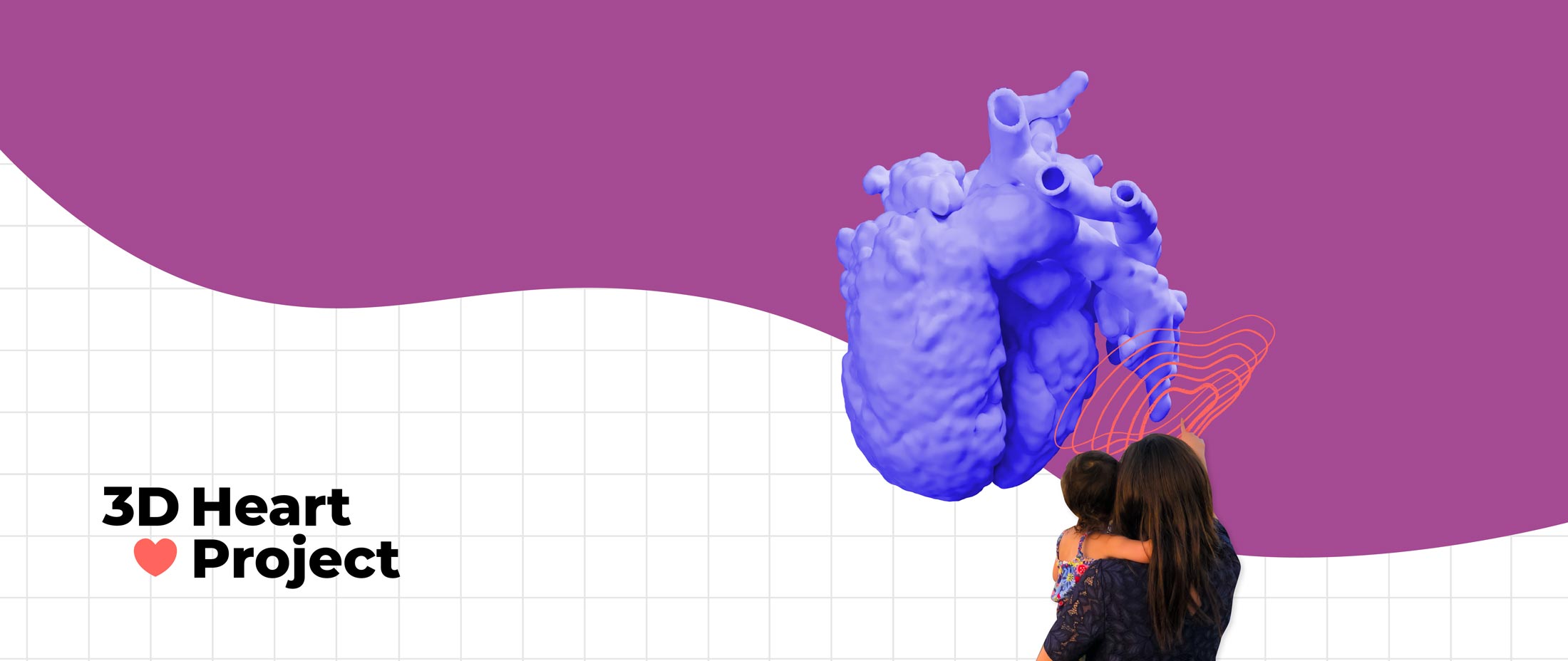
Learning aids for training in congenital heart disease
Our team worked with a doctor in the Stollery Children's Hospital on the design of a 3D visualization-based resident curriculum for congenital heart disease, utilizing 3D-printing, stereoscopy, and 2D print mediums.
The Challenge
Congenital heart defects affect one percent of live births and are notoriously difficult to understand in their 3-dimensional (3D) form. Current educational practice for residents (junior doctors) leans heavily on memorization and diagrammatic representations of CHD. Patient education for visualizing what congenital heart defects look like relies on 2D illustrations, sourced from Google. There is a gap in the availability of anatomically accurate learning tools to understand CHD. This presents an opportunity to develop and document the design of a curriculum focusing on concrete forms of visualization.
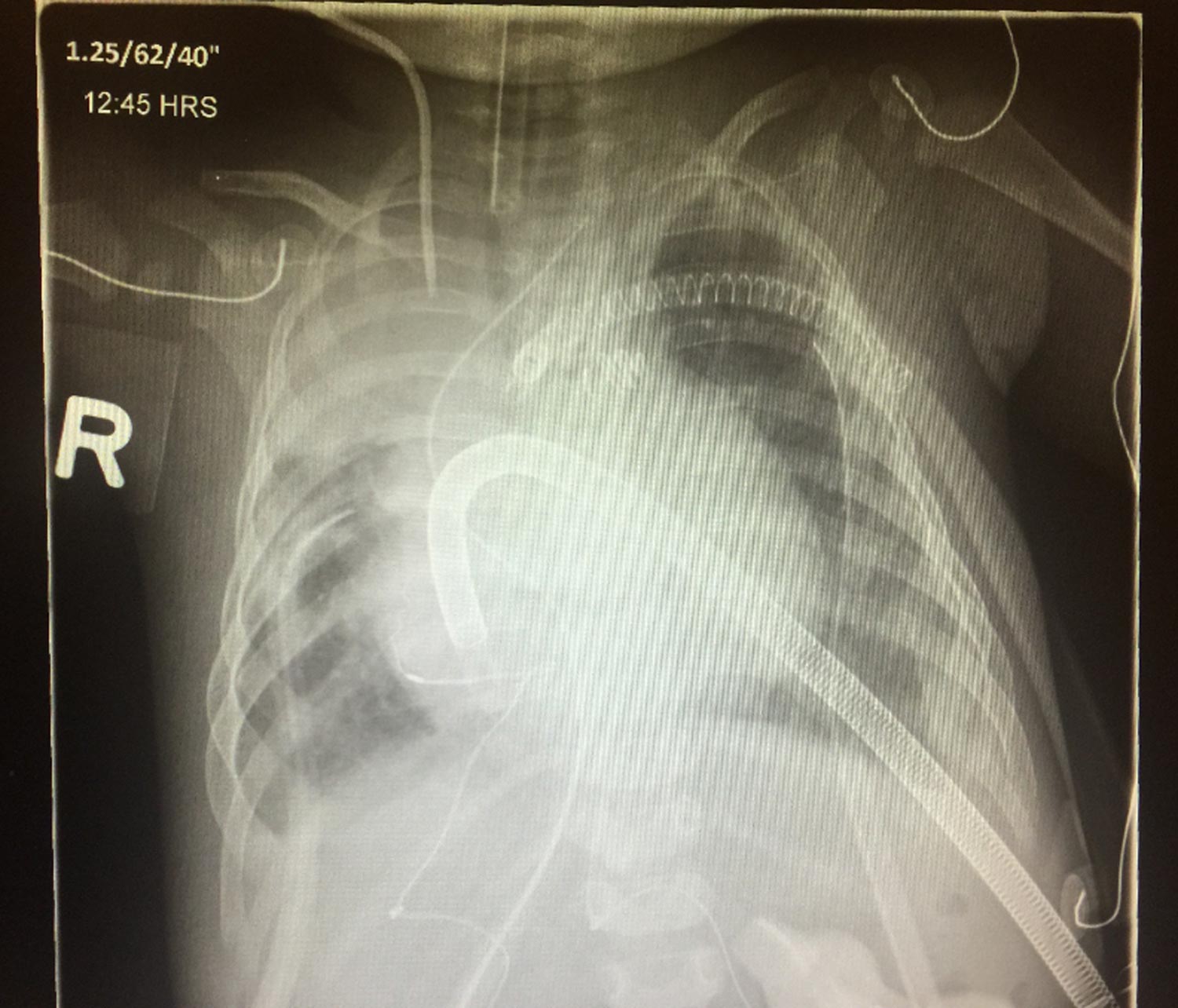
"We strongly believe that if we transform the learner, we will transform care, for the public good."
What We Did
This congenital heart disease project has taken on many different facets for different applications. This includes both resident education, and patient education. Our focus for the first half has been on resident education, while allowing ourselves to explore many ideas for patient education and engagement.
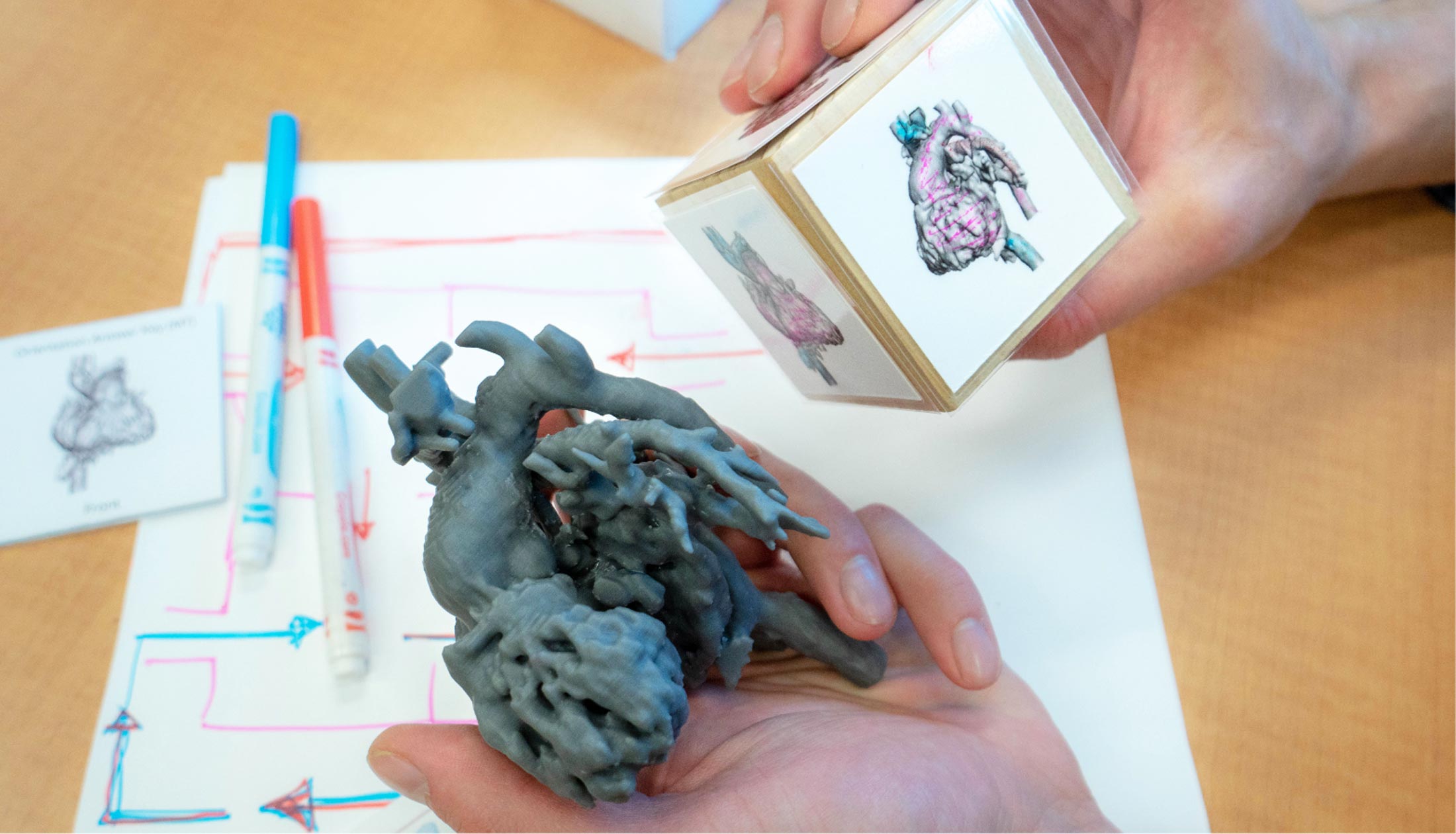
Resident Congenital Heart Disease Curriculum
Our designers needed to be informed on the users needs, wants, and limitations. The designers on the team observed the critical care and learning environments as well as conducted semi-structured interviews with learners. We designed iteratively. We followed a process of identifying challenges and opportunities, generating and proposing ideas, testing them, carefully observing, and seeking out feedback from learners, clinical teachers, staff, families, and other 'informants'. We continued to develop designs in this fashion until we arrived at a proposal which we felt could effectively and appropriately met the needs of the learners, clinical teachers, and other stakeholders. Using what we learned from our observations, interviews, and feedback, we designed the first iteration of the medical resident curriculum.
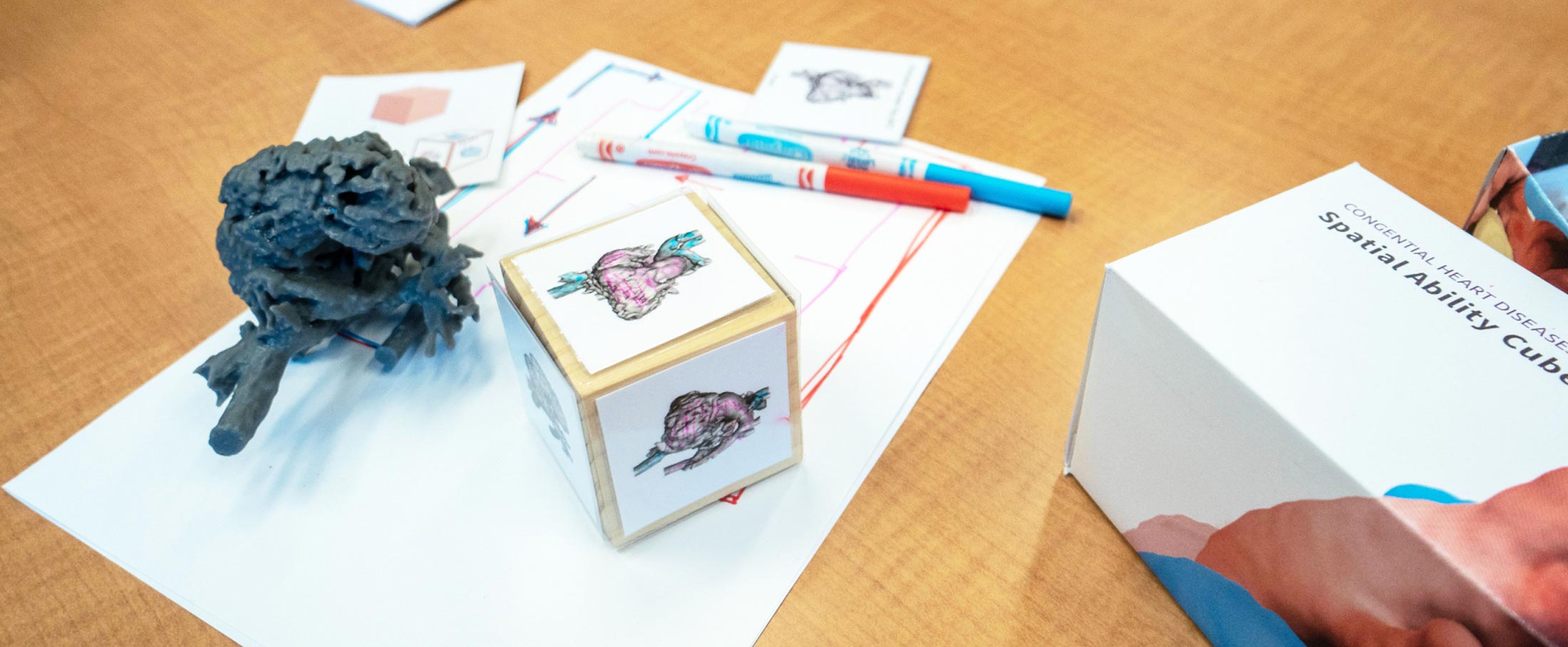
Patient Education & Engagement
During this project we discovered many different outputs we hadn't originally expected. One such output was the creation of a custom-made toy heart. A child with a congenital heart disease had undergone a heart transplant, and wanted to see his original heart. We created one anatomical model to help explain to the family their child's particular condition. We wanted to make this child feel special, and so we asked if he would like his heart created as anything in particular - and so we turned his heart into a Tie Fighter from Star Wars, equipped with wings and blasters.
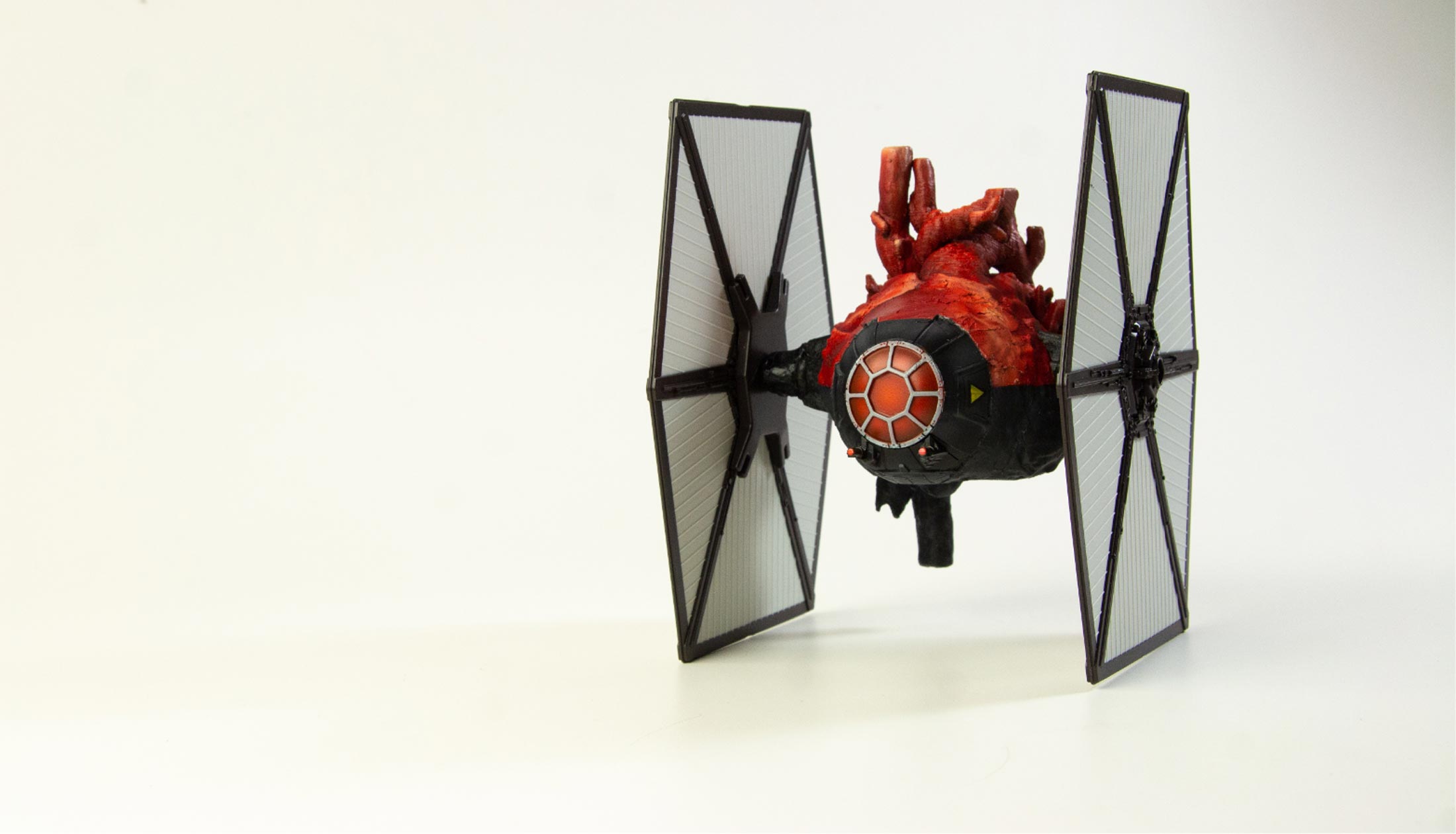
Featured article in the Folio »
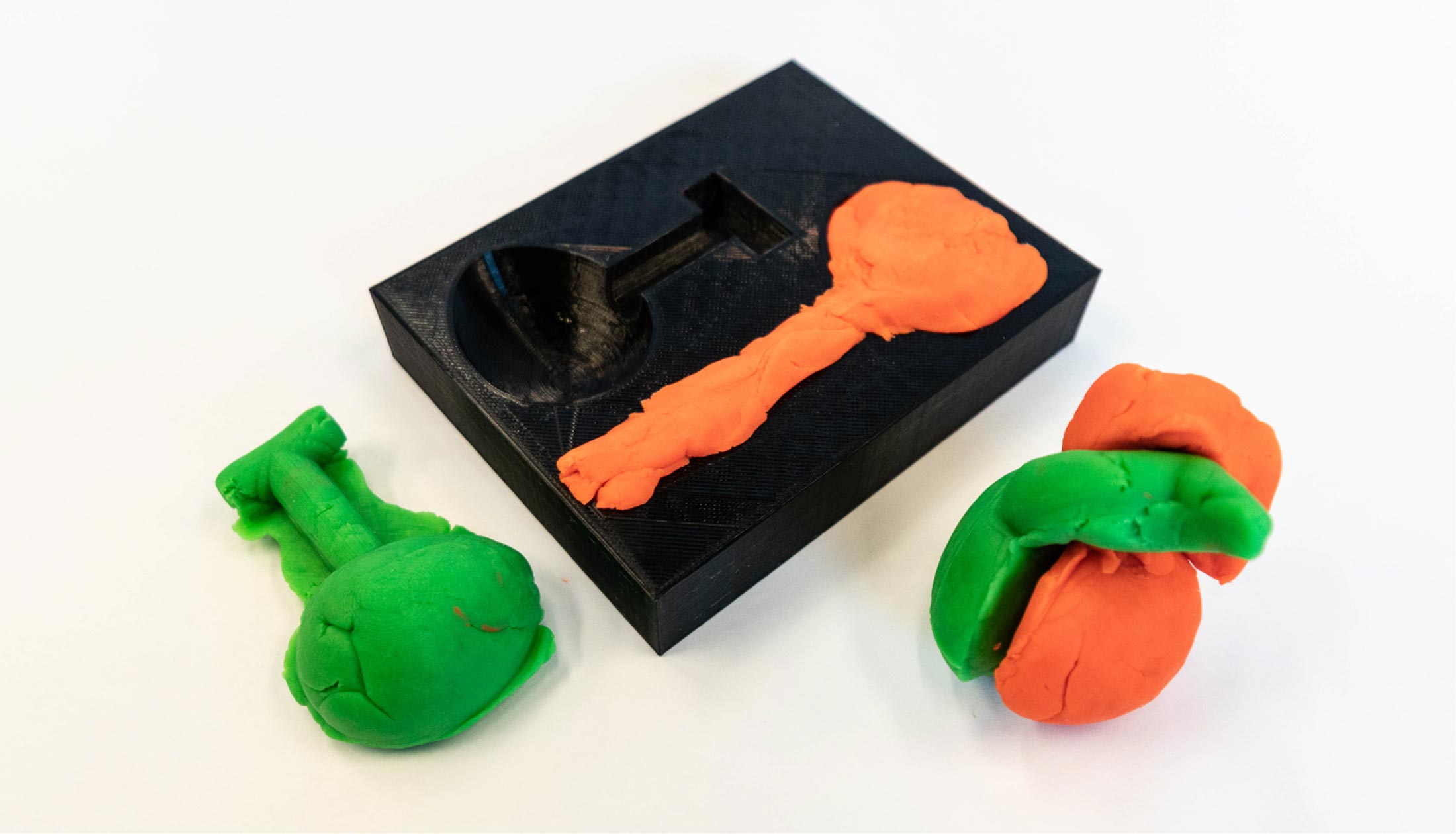
A Studio Environment
We try to keep a studio-like environment for Academic Technologies, and are always inviting new people to come join our brainstorming sessions. Resulting from a collaboration with a medical student, we created a simple play-doh mould that communicates how the heart is made of two pumps, in its simplest form. This can act as a "3D sketch" that experts can easily manipulate during patient engagement.
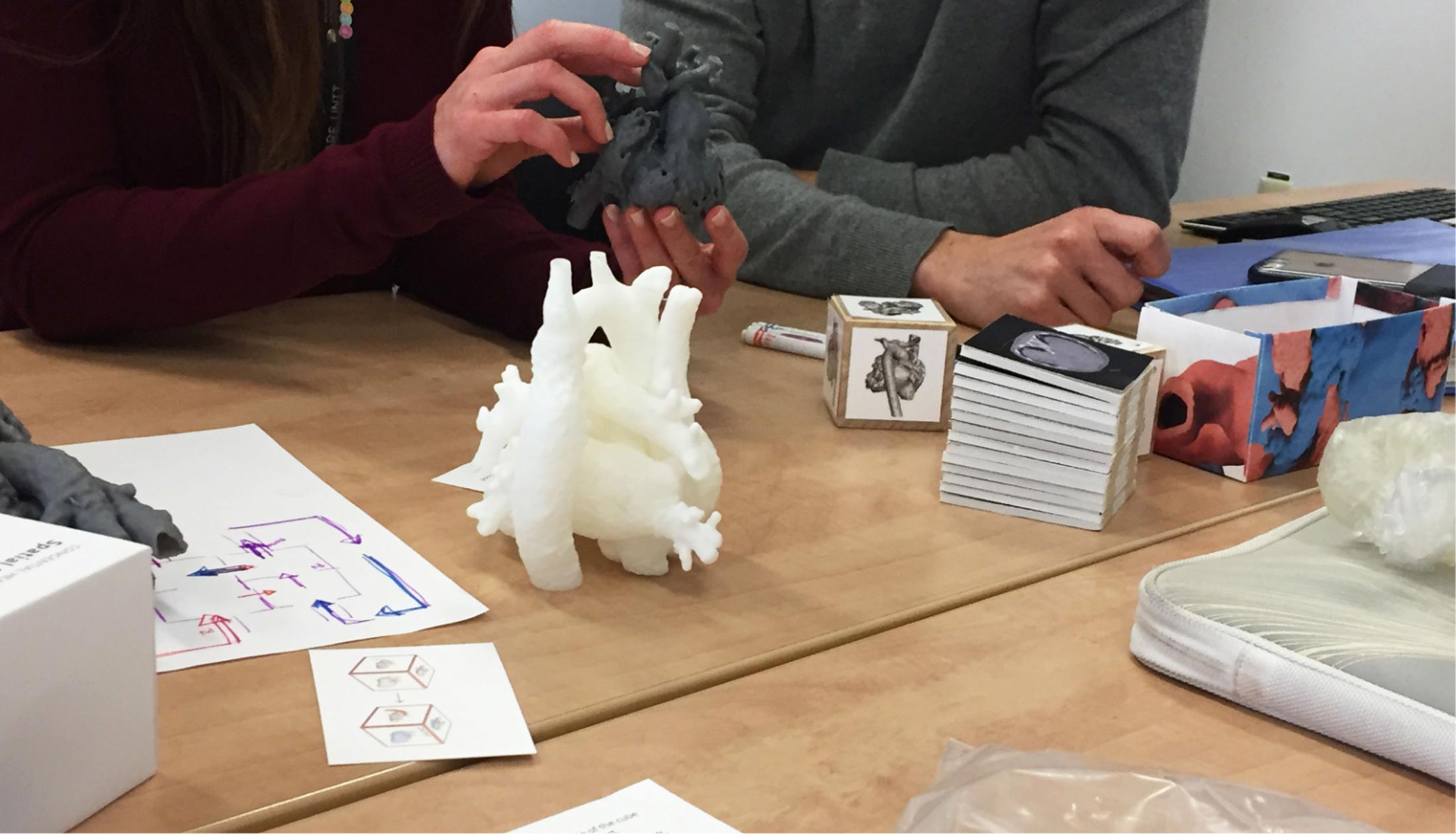
What We Learned
From creating these artifacts we discovered the benefits that well designed training models and activities can have for the understanding of complex heart defects. When designed properly these benefits can be spread among many stakeholders including medical learners, medical professionals, nurses, and the patients themselves.
Do you have an idea that you want to work through?